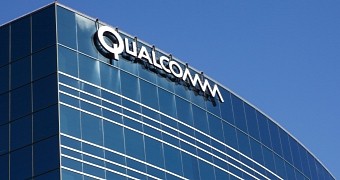Qualcomm has just announced at WinHEC today that it’s building a new series of Snapdragon processors that would support full Windows 10, thus making it possible to run x86 apps on a mobile chip.
For starters, this is pretty much the first step towards the Surface Phone, Microsoft’s eagerly-anticipated Windows phone that’s supposed to be able to run full desktop applications just like a PC, helping the software giant to invent a new product category.
People with knowledge of the matter indicated that Microsoft was working on an emulation system to run x86 apps on ARM processors, and now it appears that Qualcomm is playing a key role in this plan with its Snapdragon lineup of processors.
The company hasn’t provided any specifics on when exactly these new chips could see daylight, but at WinHEC, Qualcomm officials said the new processors would provide a PC-like experience, without any impact on performance or security.
“Hardware partners will be able to build a range of new Qualcomm Snapdragon-powered Windows 10 PCs that run x86 Win32 and universal Windows apps, including Adobe Photoshop, Microsoft Office and popular Windows games,” Microsoft announced.
“For the first time ever, our customers will be able to experience the Windows they know with all the apps, peripherals, and enterprise capabilities they require, on a truly mobile, power efficient, always-connected cellular PC.”
Furthermore, Microsoft has also demonstrated Windows 10 running on a Qualcomm Snapdragon processor at the event, and offered a preview of how Photoshop would work on this chip. As you can see for yourselves below, performance is impressive to say the least, and this is a confirmation that Microsoft is indeed heading into a direction that would allow the firm to launch a Surface Phone.
What does this mean for Windows phones?
It goes without saying that running full Windows 10 on ARM processors is quite huge, but this doesn’t necessarily mean that adoption of Windows phones would skyrocket after devices powered by these chips go live.
First and foremost, support for x86 apps would be primarily aimed at Continuum, so you’ll be able to use them when phones are connected to external screens. The rest of the time, x86 apps do not make much sense given the limited screen size on a phone, so users would have to continue relying on apps in the Windows Store.
Furthermore, there’s a good chance that these devices would be super-expensive, at least until they become more widely adopted by manufacturers, and Microsoft would target businesses specifically.
There was a rumor that Microsoft might be planning a consumer version of the Surface Phone that would lack some functionality of the high-end models, but there’s a good chance that Win32 app support might be missing from this SKU.
One thing is for sure, though: bringing full Windows 10 on Snapdragon processor is huge news for Microsoft and its users, be they consumers or enterprises.

 14 DAY TRIAL //
14 DAY TRIAL // 